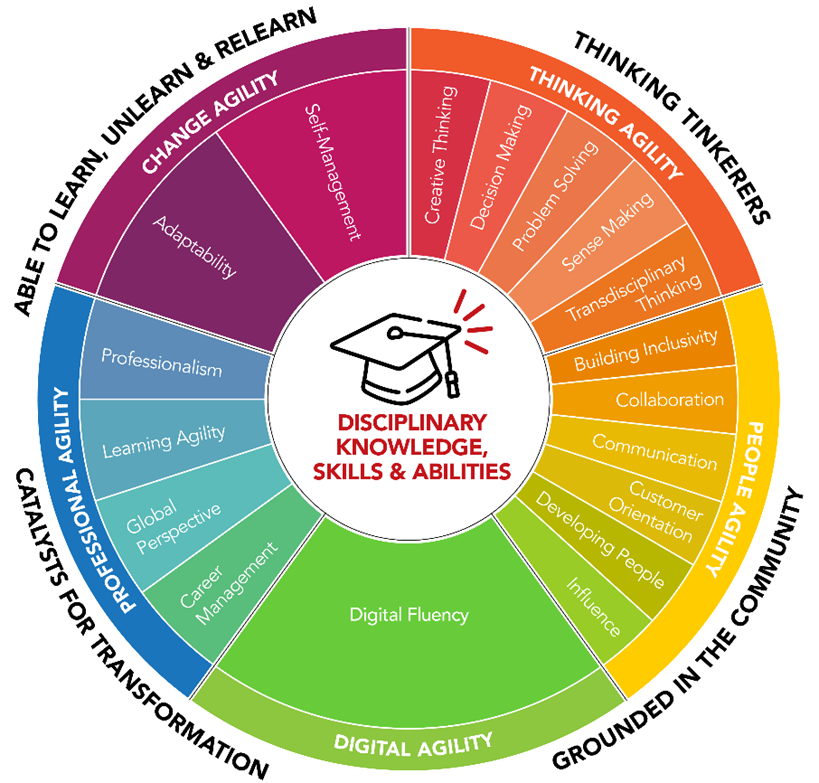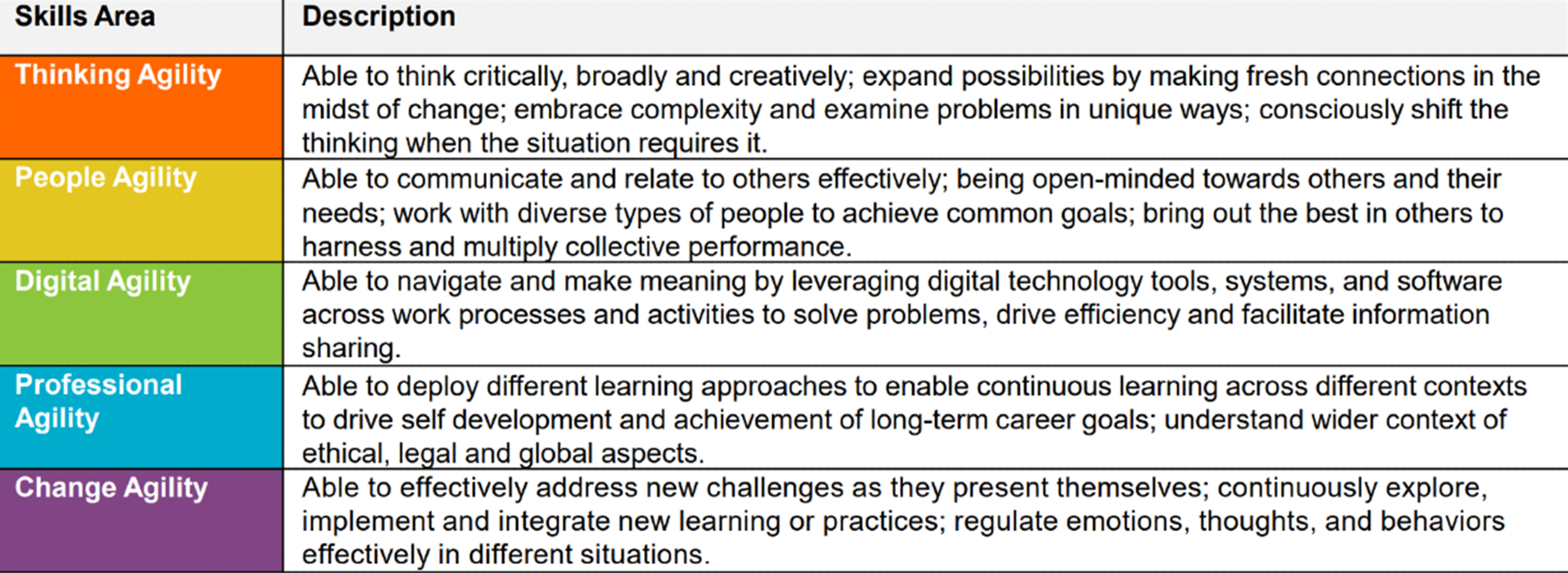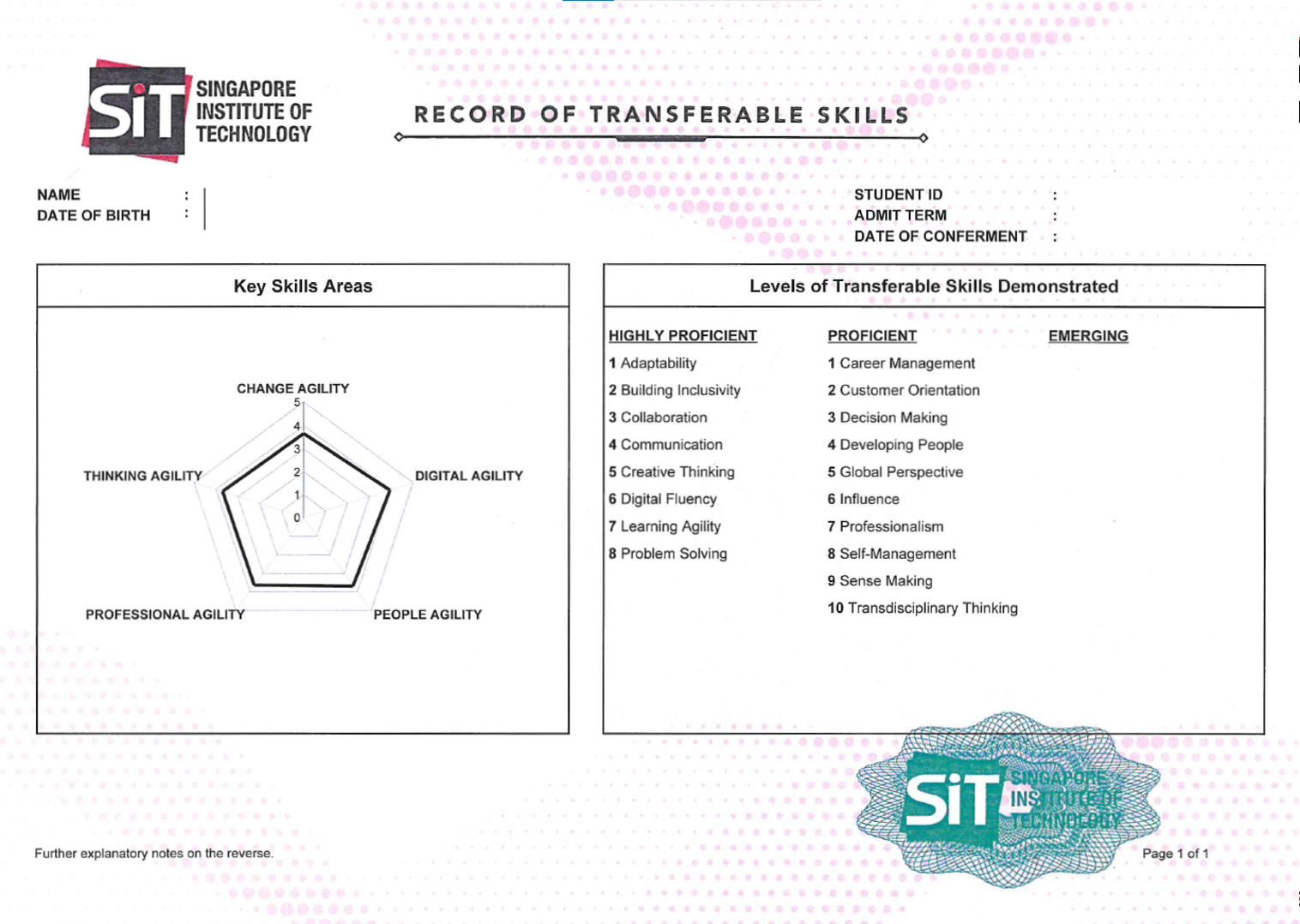![[FA] SIT One SITizen Alumni Initiative_Web banner_1244px x 688px.jpg](/sites/default/files/2024-12/%5BFA%5D%20%20SIT%20One%20SITizen%20Alumni%20Initiative_Web%20banner_1244px%20x%20688px.jpg)
Industry-Ready Skills Framework (IRSF)
Truly Industry-Ready
At SIT, we prepare students holistically for the world of work. Through the Industry-Ready Skills Framework (IRSF), our students can plan and develop essential skills in a structured manner. Upon graduation, every student will receive a Record of Transferable Skills (RTS) that complements their academic transcript. RTS is a documentation of the transferable skills achieved during a student's time at SIT. It serves as a conversation starter with potential employers about the skills an SIT graduate can bring beyond academic qualifications.

Implemented in 20211, the IRSF allows students to map skills in the following areas:
- Disciplinary Knowledge, Skills, and Abilities: Core applied degree learning outcomes.
- Transferable Skills: Critical core skills that are considered workplace essentials by employers and industry, categorised into 5 skill areas2 – Thinking Agility, People Agility, Digital Agility, Professional Agility, and Change Agility (see figure 2).
- SITizen-DNA Attributes: Qualities that help students be resilient and adaptable in a changing workplace.

The framework helps students understand the skills they will develop and demonstrate from the roles and activities they take up at SIT.
How can I use it as a Student or Employer?
The IRSF incorporates 18 transferable skills across 5 skill areas. This suite of skills was identified as essential for workplace success, drawing on feedback from employers and industry leaders. The IRSF is also adapted from SkillsFuture Singapore's Critical Core Skills. Each student’s skill achievements are mapped onto the RTS, which indicates their mastery of different skill areas across these levels: "emerging," "proficient," and "highly proficient."
The RTS transcript serves as a showcase of a student’s transferable skills developed both within and beyond their academic curriculum. With the RTS, both students and employers can identify the key strengths and competencies of each SITizen, which can be matched to an organisation’s needs.

More Information:
Have a burning question on the IRSF and RTS and their benefits for job placement and skills development? Contact Us:
- Formal curriculum3 transferable skills / Record of Transferable Skills: Registrar’s Office - Registrar@SingaporeTech.edu.sg
- Outside curriculum4 transferable skills: Office of SITizen Experience - OSE@SingaporeTech.edu.sg
1 The IRSF was piloted in 2021 with 5 degree programmes (Digital Communications and Integrated Media (DCIM), Pharmaceutical Engineering, Physiotherapy, Robotics Systems, and Speech and Language Therapy) and applies to all undergraduate intakes from AY2022/23.
2 This set of skills are aligned with SkillsFuture Critical Core Skills.
3 Formal curriculum refers to the academic modules that provide students with the disciplinary knowledge and skills needed for their applied degree programmes. All students will have a basic radar chart tailored to their programme of study.
4 Outside curriculum refers to programmes, activities and experiences organised by SIT that help students develop specific skills and attributes through their roles (e.g., executive committee member, facilitator, participant).














